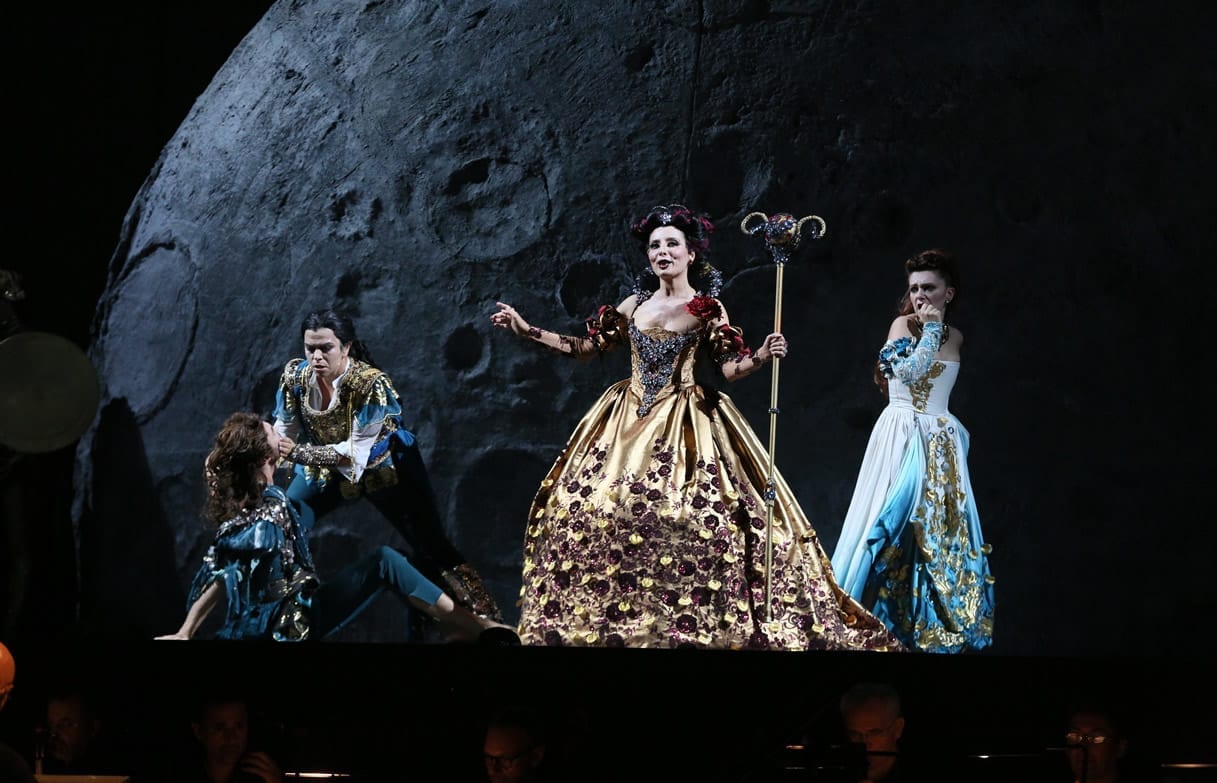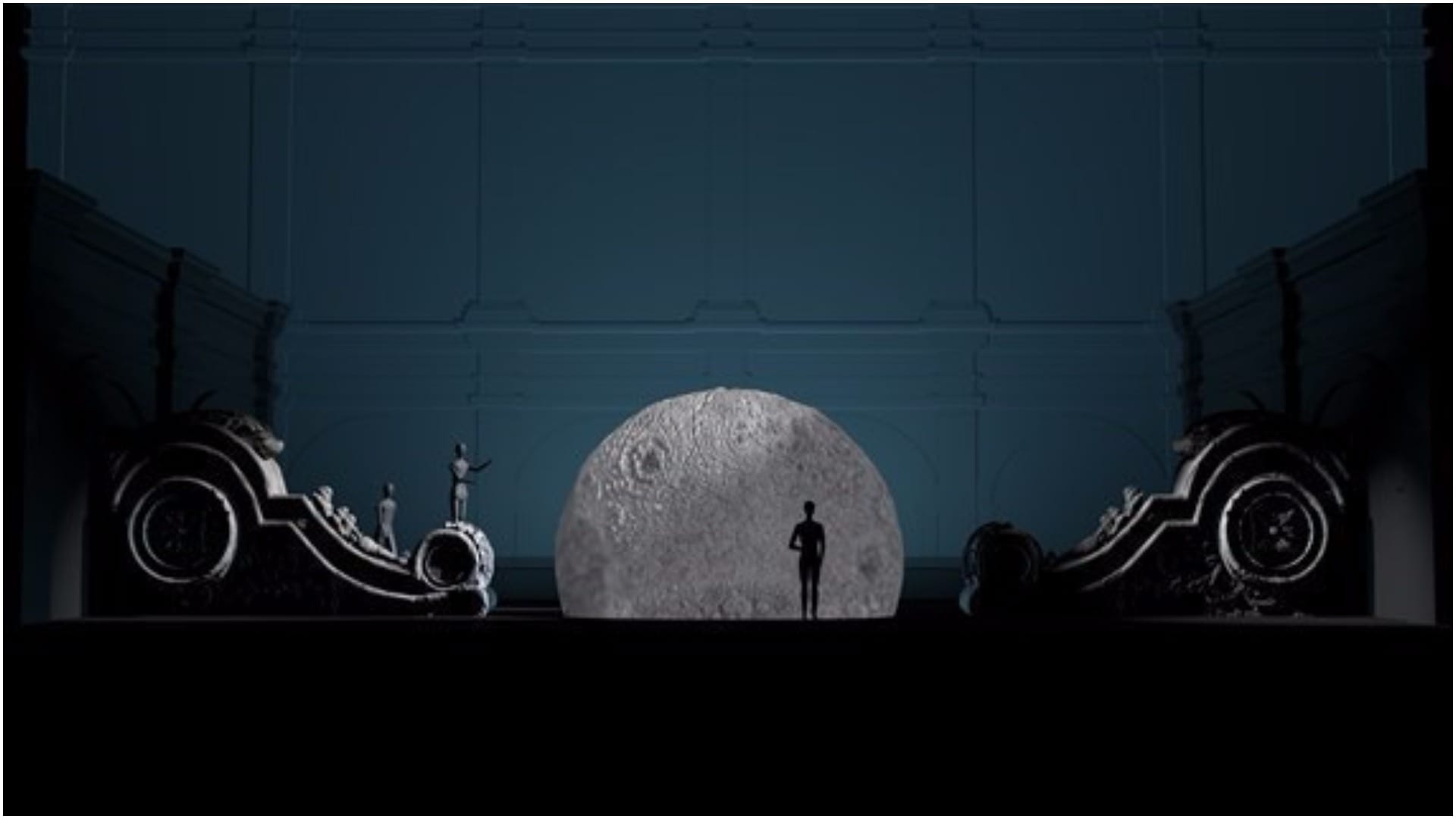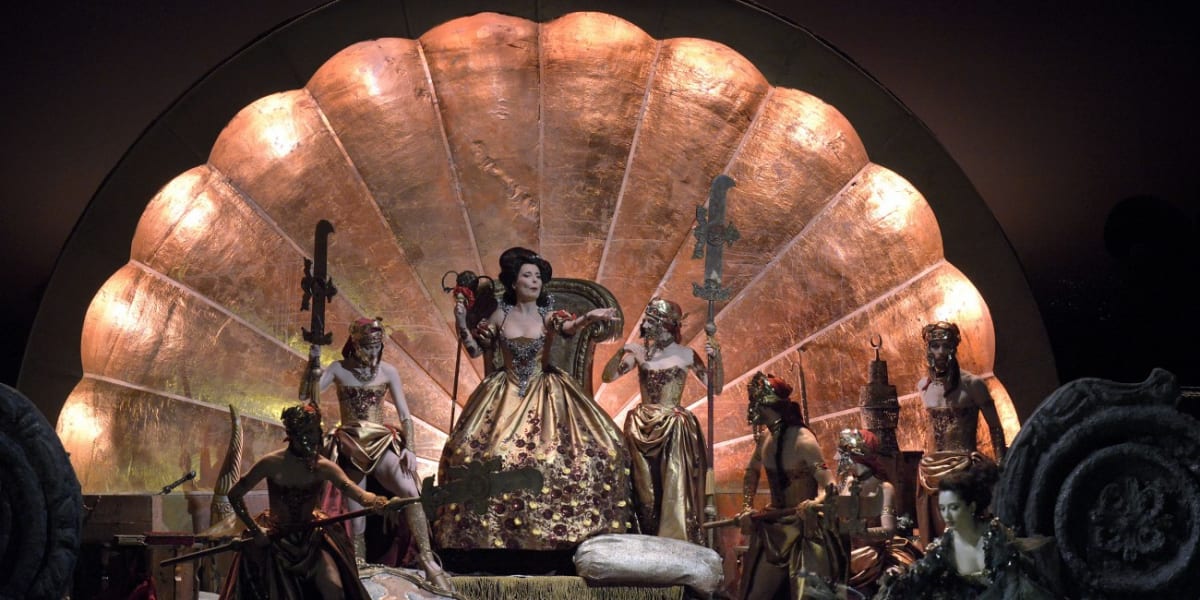The titular character of Ariosto’s poem is the Roland of the French and English mediaeval romances. The Italian poet’s sixteenth century epic unfolds against the background of the war between Charlemagne and the Saracen army. Orlando is the emperor’s nephew and his most trusted paladin. Braccioli’s libretto however does away with the political plot and focuses on the love intrigues, blending tragedy and comedy in the fashion of the age. Vivaldi’s opera premiered in Venice in 1727.

Director Ceresa’s staging is not only that of a consummate man of the theatre who creates breath-taking effects with ease, but also that of an erudite, as his production fills the gaps created by the libretto in Swiss-cheese fashion, and adds a symbolic dimension that is culturally retrospective.
Ariosto’s poem is very modern in its unbiased distribution of gender roles: Bradamante is a fierce female warrior who disguises herself as a knight, while her beloved Ruggiero is instantly enchanted by the sorceress Alcina into oblivion. The latter is a strong feisty witch (derived from Circe and Calypso), while Medoro is constantly fearful. His beloved Angelica, in stark opposition to her name, is a devious murder-plotter, while Orlando loses his mind out of love. Mirroring this surprising ambiguity, Alcina’s train of followers are both men and women dressed the same, in garments redolent of the Venetian tradition of the courtesans, which also casts the suspicion of doubtful morality. Then, mid-opera, they behave like warriors and, finally, they strip, engaged in a Venusberg-like orgy.
Orlando’s trip to the moon is skipped in the libretto, but Ceresa makes up for it by designing the set as a rotating half-sphere: one side looks like the surface of the moon, and the other is Alcina’s shell-shaped gilded boudoir. When Angelica challenges Orlando to fight Oronte, a ferocious beast that guards the elixir of eternal youth, his climb is over the moon-like hemisphere.
The colours of Giuseppe Palella’s costumes are subtle, grouping characters “of a feather” and marking the changes of alliance that they operate, while necklaces symbolise slavery, like dog collars.
Massimo Checchetto’s sets are spectacular, particularly the fabric sea, the boats made of shields, the giant Oronte, and the hippogriff – a fantastic creature half eagle, half horse. Orlando’s “wits” are handed back to him in the shape of a balloon.
Fabio Barettin’s lights are equally inspired. When, at the end, Alcina is desperate, her golden shell is the only thing that shines on stage, surrounded by complete darkness; when she stabs the hippogriff, the shell turns scarlet. While when Orlando discovers Angelica and Medoro are married, the shell turns a bilious green as he goes mad with spite and jealousy. And at the end, Orlando is left holding a balloon – his mind, presumably – that is the only luminous point on stage.
Director Ceresa obtained thrilling and convincing acting from all the singers, definitely helped by the fact that all the interpreters of female parts are beautiful and have enviable figures.
Musically, the performance was entrancing. My only concern is that this is an opera made of arias and recitatives, with no ensembles – only two choruses and a feeble attempt at a duet, mostly sung in unison.
Maestro Fasolis’s orchestra was sparkling and mellifluous. The star of the evening was countertenor Carlo Vistoli, whose splendid timbre and impeccable technique intertwined with astounding dramatism and sensibility (especially in the magnificent aria accompanied by recorder and guitar). His acting talent and handsomeness completed a memorable character.

In the dominant female role, Lucia Cirillo was electric and charismatic, if at times a little violent vocally. Baritone Riccardo Novaro’s beautiful tone and masterfully conducted voice contoured a human Astolfo, easy to empathise with. Soprano Francesca Aspromonte’s Angelica was a strong presence and, except for a few strained or flat high notes, her voice was flexible and sprightly. Contralto Loriana Castellano was impetuous and convincing, while countertenor Raffaele Pe was dashing in his first aria, with perfect roulades, yet struggled slightly with his second.
The only baffled expectation was the title character, contralto Sonia Prina, whose wobble and breathy roulades made her sound prematurely aged. However, her acting and musicality were convincing – rounding up the performance as an unforgettable experience.

